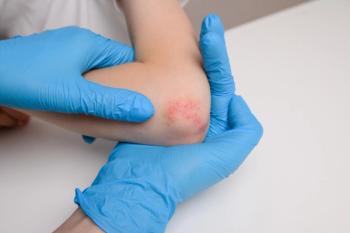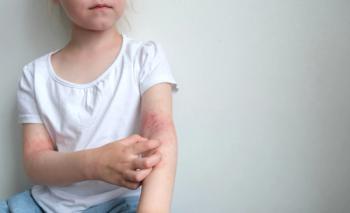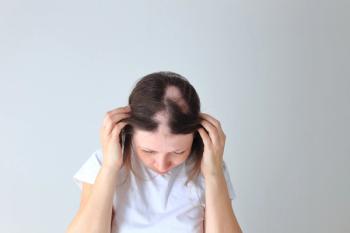
Roflumilast Foam 0.3% Evaluated for Seborrheic Dermatitis in Adults
Roflumilast foam can help address the unmet need for an effective, cosmetically tolerable treatment for seborrheic dermatitis.
Roflumilast foam, 0.3%, may be safe, efficacious, and tolerable for adults with seborrheic dermatitis, according to research results published in JAMA Dermatology.1
Currently, the topical treatment options for seborrheic dermatitis are limited by efficacy and safety. Therefore, researchers sought to evaluate the safety and efficacy of roflumilast foam, 0.3%, in adults with seborrheic dermatitis of the scalp, face, and/or trunk.
Data were collected from participants in a multicenter, phase 2a, parallel group, double-blind, vehicle-controlled clinical trial conducted between November 2019 and August 2020. Adults with a clinical diagnosis of seborrheic dermatitis for a 3-month or longer period, and an Investigator Global Assessment score of 3 or higher (moderate) affecting 20% or less of body surface area, were included. The primary study outcome was IGA success, “defined as achievement of IGA score of clear or almost clear plus 2-grade improvement from baseline at week 8.” The secondary outcomes included IGA success at weeks 2 and 4, achievement of an erythema score of 0 or 1 plus a 2-grade improvement from baseline at weeks 2, 4, and 8, a change in the Worst Itch Numeric Rating Scale score from baseline, and Worst Itch Numeric Rating Scale success.
The study cohort included 226 patients (mean age, 44.9±16.8 years; 116 men) who were randomly assigned to receive either roflumilast foam or vehicle foam (n=154 and n=72). By week 8, 73.8% of patients in the roflumilast group achieved IGA success vs 40.9% in the vehicle group. Patients in the roflumilast group also had statistically significantly higher rates of IGA success vs the vehicle group. Mean reductions in Worst Itch Numeric Rating Scale Score at week 8 were 59.3% vs 36.6% in each group, respectively.
Overall, roflumilast foam was well-tolerated, with a low rate of adverse events. Thirty-seven adverse events were reported in the roflumilast group; 35 were mild or moderate and 2 were severe (hyperkalemia and migraine), both of which were considered unrelated to treatment. In the vehicle group, 11 of the 13 adverse events were mild or moderate. Only 3 patients experienced adverse events of application site pain (2 in the roflumilast group).
Study limitations included the 8-week treatment period, the small patient population, and the small number of patients with seborrheic dermatitis.
“These results suggest that roflumilast foam, 0.3%, has the potential to help address the unmet need for an effective, cosmetically tolerable treatment for seborrheic dermatitis,” the researchers concluded.
Reference
1. Zirwas MJ, Draelos ZD, DuBois J, et al. Efficacy of roflumilasat foam, 0.3%, in patients with seborrheic dermatitis. A double-blind, vehicle-controlled, phase 2a randomized controlled trial. JAMA Dermatol. Published online May 3, 2023. Doi:10.1001/jamadermatol.2023.0846
Newsletter
Pharmacy practice is always changing. Stay ahead of the curve with the Drug Topics newsletter and get the latest drug information, industry trends, and patient care tips.















































































































